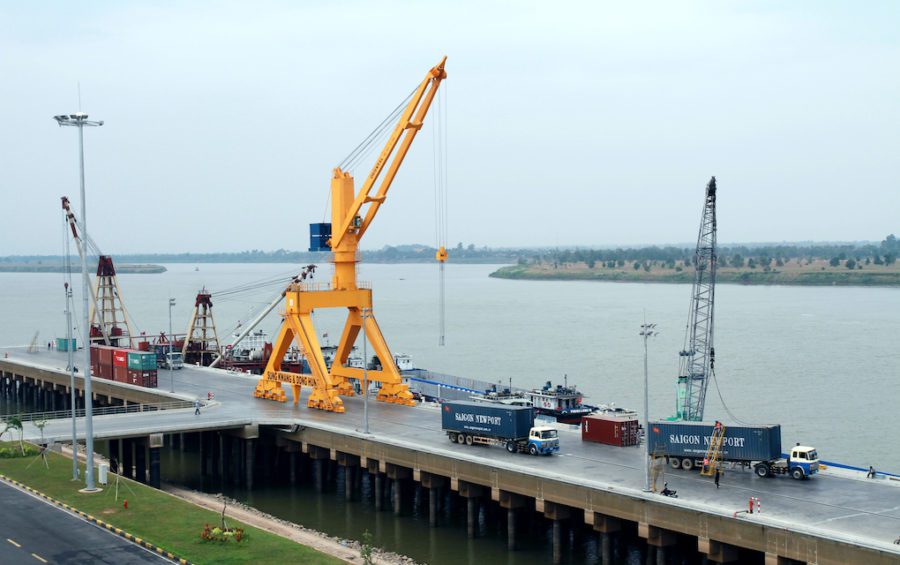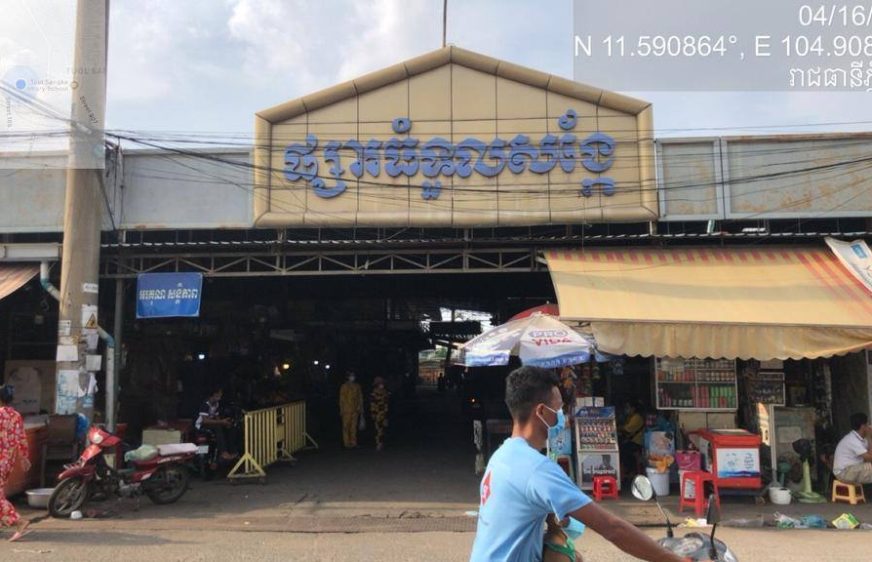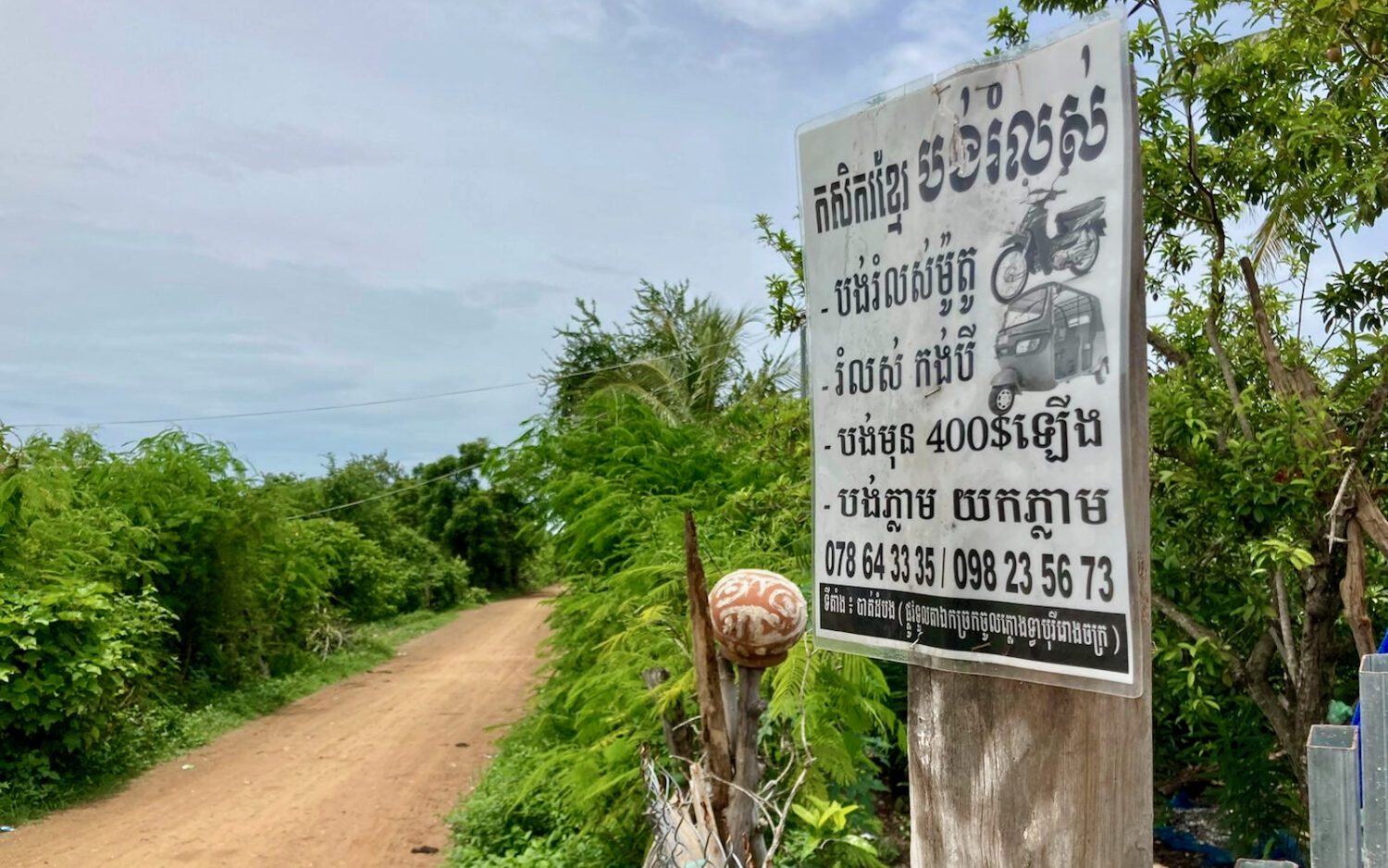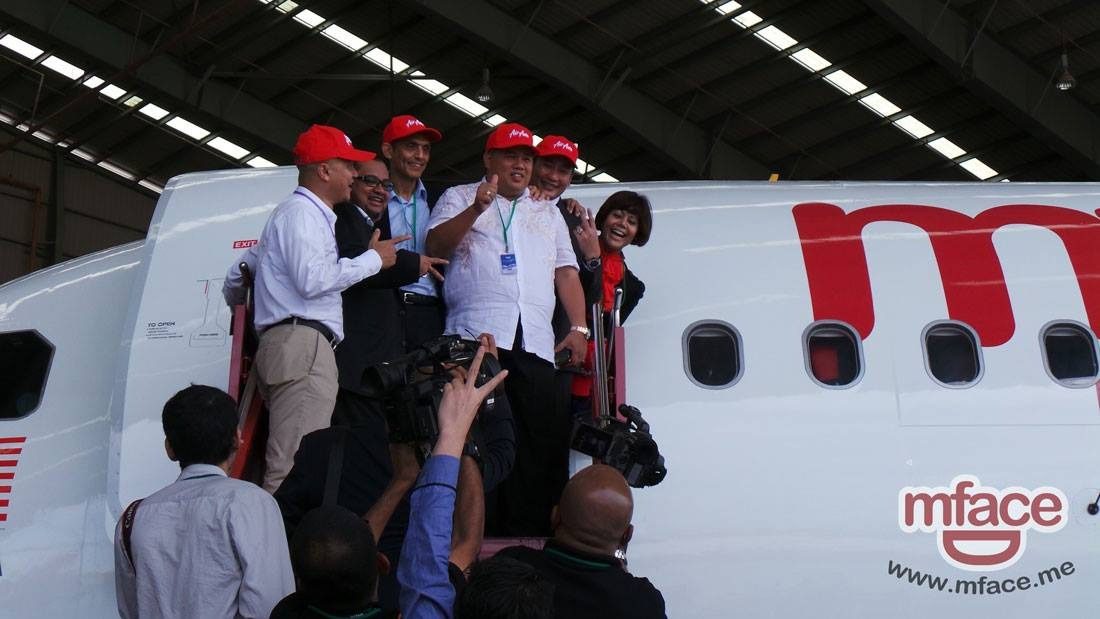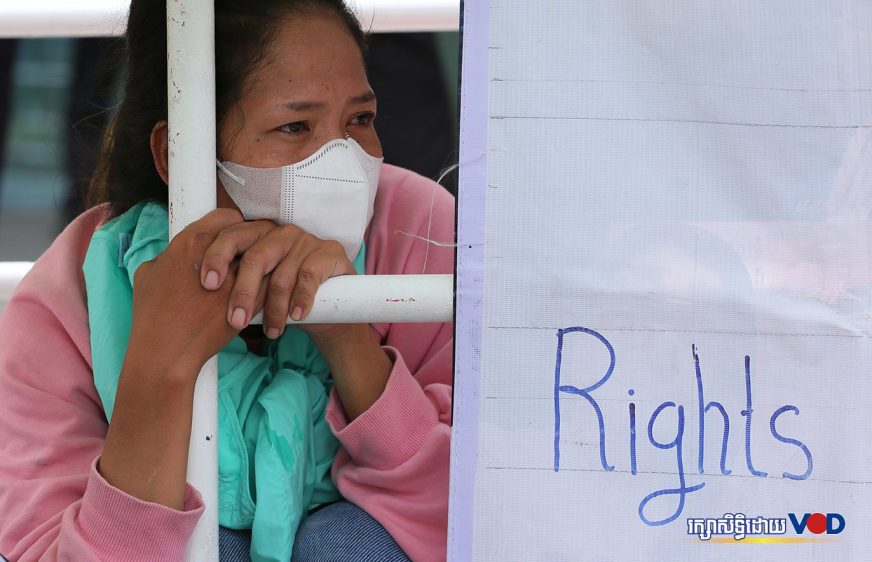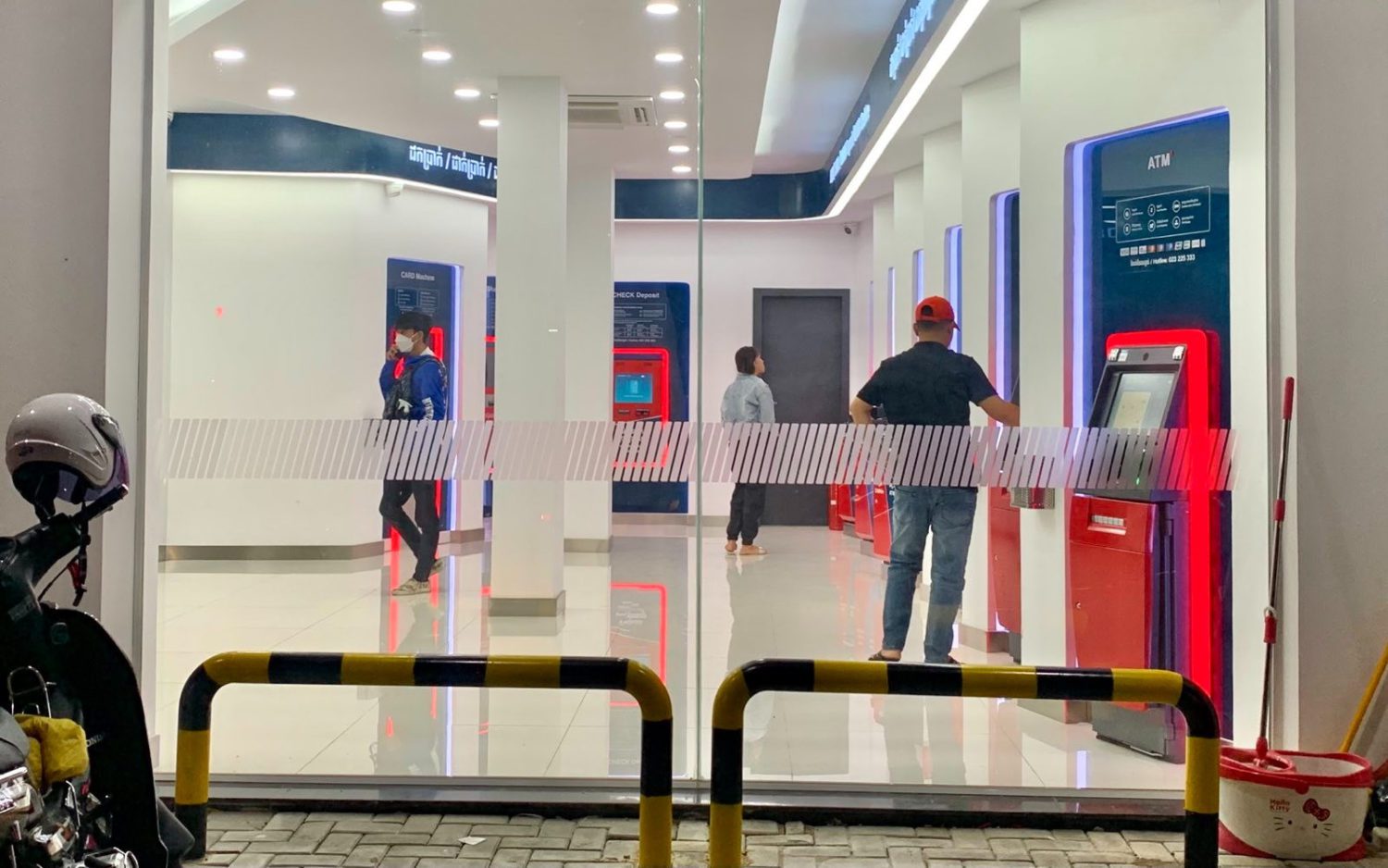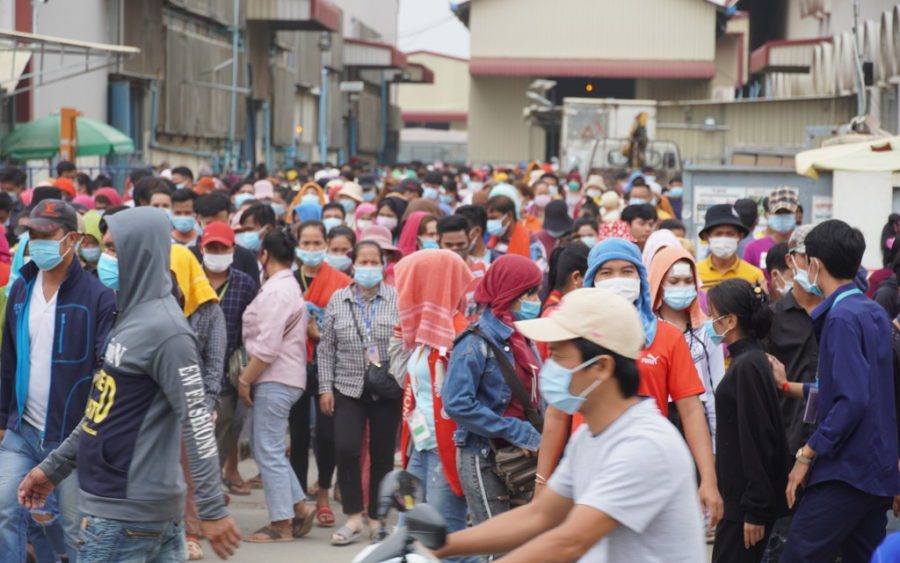The Cambodian economy has recovered to pre-pandemic levels in several areas, but instability around the world threatens its outlook, a World Bank report said today.
The bank’s latest country economic update, “Navigating Global Economic Headwinds,” projected a 4.8% GDP growth for Cambodia this year on the back of surging garments exports to the U.S. Tax revenue is back to pre-pandemic levels and consumer confidence remains high. But the report added that risks were “tilted to the downside” as the global economy faces major upcoming challenges:
- Cambodia relies on exports to the U.S. and E.U., and investment from China. All are facing risks of slowdown. Though exports rose sharply in the first half of the year, the growth has since eased off.
- Household debt continues to balloon and is increasingly concentrated in a slowing property sector. The World Bank talked of “increased property speculation” and “rapid credit expansion as a prelude to financial crises.”
- International arrivals have swerved away from Chinese tourists to Thai and Vietnamese nationals, who now make up 58% of arrivals and are changing the profile of Cambodia visits. Angkor ticket sales, Siem Reap arrivals and air passengers remain low even as visitor numbers rise.
In a panel discussion at the report’s launch, World Bank economists and Cambodian officials also discussed poverty risks. Inflation is pushing many rural families back into poverty, and farmers have little choice but to stop using chemical fertilizers as prices shoot up, an agriculture expert said.
Foreign Reliance
Two-thirds of Cambodia’s exports went to the U.S. and E.U., as goods exports to the U.S. rose a “whopping” 37% year-on-year.
Most of the exports were garments, footwear and travel goods, with some additional wood products and furniture, electrical and vehicle parts, and bicycles.
China, meanwhile, remained the main source of foreign investment — 90% of the total approved — with large investments in logistics ports. It was a major market for agricultural exports, at 40% of that trade, yet remained small overall at just 6% of total exports.
However, all three markets were uncertain, particularly amid high energy prices and inflation due to Russia’s invasion of Ukraine.
“Cambodia’s export-oriented manufacturing is vulnerable to an extended slowdown in the United States,” the World Bank said. “Similarly, the slowdown in China … if sustained, will negatively impact investment and capital inflows.”
The growth in exports eased off in the second half of the year, the report added.
Gold also loomed large in Cambodia’s trade, with gold imports “strong” at $4 billion in the first eight months of the year — a figure far higher than total agricultural exports at $715 million, as an example.
Gold was thereby excluded in some current account deficit calculations. This was necessary as only imports — and not exports — were fully recorded, World Bank economist Ly Sodeth said in response to a question.
“We have to look at the data carefully, because imports have to be done with approval, licensing, permits,” Sodeth said. “Usually, when gold is imported, it’s fully recorded. But when exported it’s not fully recorded.”
Sodeth said he did not know what was driving the gold trade.
“Gold just happened last year. We’re still looking into that and discussing with the central bank,” he added. “Everybody seems to be surprised to see the increased imports.”
When aberrations in gold trade figures began during Covid-19, some observers noted Cambodia’s long-standing alleged links to gold smuggling to Vietnam.
Property Debt
The World Bank report dedicates a sidebar to the question: “Are risks from rising private debt a concern?” It does not answer yes or no, but presents a spate of evidence:
- Credit from banks and microfinance grew from 14% of GDP in 2012 to 145% in 2021, without counting informal lending.
- Household debt “exploded” from 2.5% of GDP in 2010 to 34% in 2021.
- Household debt-to-consumption ratio “soared” from 20% in 2014 to 65% in 2019.
- “Household loans are found not to be productively used,” it said, with productive loans accounting for only 28% of the total.
- Loans are increasingly concentrated in property, based on available data, and “there is an unknown outstanding amount of mortgage loans provided by housing and real estate developers.”
Cambodia’s household debt of 34% of GDP was noted as an outlier, comparing unfavorably to 16% in Brunei and 10% in Sri Lanka, the Philippines and Indonesia.
“There is a need to rein in the high credit growth and the concentration of credit in the real estate sector,” the report said. “A large literature in economics … views rapid credit expansion as a prelude to financial crises.”
Domestic credit for real estate expanded even as construction activity eased, the report added. “This may indicate increased property speculation activity,” it said. “A real estate market correction may have started.”
Nonperforming loan rates remained low, but declining asset quality could be masked by extensive loan restructuring allowed during Covid-19, it said.
However when asked about a recent German report on microfinance overindebtedness, Sodeth said the World Bank had not studied whether investment in MFIs should continue.
“The market can decide,” Sodeth said. “It’s a market economy. Competition is key.”
Changes to Tourism
Chinese tourists made up more than a third of international arrivals in 2019. So far this year, they are less than 5%.
Instead, Thai and Vietnamese arrivals are accounting for nearly 60% of arrivals.
The change in the makeup of international arrivals was seen in a range of tourism-sector statistics.
In September, international arrivals rebounded to more than half of the same month in 2019, continuing an upward trend since April. But Angkor ticket sales were flat, at just 7% of 2019 levels for the first nine months of 2022.
The share of air arrivals, meanwhile, was down from 67% in 2019 to 37% this year, and the share of air arrivals to Siem Reap down from 29% to just 5.5% now.
The World Bank recommended continued improvements to tourism, including better connections to secondary destinations.
Poverty Risk
Soeng Saran, chief executive of Amru Rice and chair of the Cambodian Rice Federation, told a panel discussion that farmers had recently been adapting to a series of shocks — most recently a spike in chemical fertilizer prices and lingering late rains.
Farmers had cultivated rice with shorter harvest times and switched to natural fertilizers. “We’re not able to afford chemical [fertilizers] anymore,” Saran said.
The discussion followed the World Bank’s presentation on inflation driving more poverty; it estimated that Cambodia’s poverty rate would increase from 18% to 22% due to rising inflation.
Chan Narith, Finance Ministry undersecretary of state, said the government was identifying a new category of “at risk” IDPoor recipients who were just above the poverty line — but would likely fall back amid the current challenges — and provide cash in three installments over the next year.
The World Bank called for ongoing social support for the country’s poor, as well as introducing more progressive forms of taxation, such as a personal income tax.


